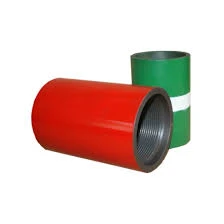- Afrikaans
- Albanian
- Amharic
- Arabic
- Armenian
- Azerbaijani
- Basque
- Belarusian
- Bengali
- Bosnian
- Bulgarian
- Catalan
- Cebuano
- Corsican
- Croatian
- Czech
- Danish
- Dutch
- English
- Esperanto
- Estonian
- Finnish
- French
- Frisian
- Galician
- Georgian
- German
- Greek
- Gujarati
- Haitian Creole
- hausa
- hawaiian
- Hebrew
- Hindi
- Miao
- Hungarian
- Icelandic
- igbo
- Indonesian
- irish
- Italian
- Japanese
- Javanese
- Kannada
- kazakh
- Khmer
- Rwandese
- Korean
- Kurdish
- Kyrgyz
- Lao
- Latin
- Latvian
- Lithuanian
- Luxembourgish
- Macedonian
- Malgashi
- Malay
- Malayalam
- Maltese
- Maori
- Marathi
- Mongolian
- Myanmar
- Nepali
- Norwegian
- Norwegian
- Occitan
- Pashto
- Persian
- Polish
- Portuguese
- Punjabi
- Romanian
- Russian
- Samoan
- Scottish Gaelic
- Serbian
- Sesotho
- Shona
- Sindhi
- Sinhala
- Slovak
- Slovenian
- Somali
- Spanish
- Sundanese
- Swahili
- Swedish
- Tagalog
- Tajik
- Tamil
- Tatar
- Telugu
- Thai
- Turkish
- Turkmen
- Ukrainian
- Urdu
- Uighur
- Uzbek
- Vietnamese
- Welsh
- Bantu
- Yiddish
- Yoruba
- Zulu
api tubing couplings
Understanding API Tubing Couplings A Comprehensive Guide
API tubing couplings play a crucial role in the oil and gas industry, providing the essential connection points between sections of tubing used in well construction. These couplings are designed to ensure the integrity and safety of the wellbore while facilitating the efficient flow of crude oil and natural gas. This article will delve into the significance, types, and specifications of API tubing couplings.
What are API Tubing Couplings?
API tubing couplings are special fittings that connect different lengths of tubing in a wellbore. According to the American Petroleum Institute (API) specifications, these couplings are manufactured to standardized dimensions, allowing for compatibility and reliability across various systems. They are typically made from high-quality steel to withstand the harsh conditions encountered in oil exploration and extraction processes.
Importance of API Tubing Couplings
The primary purpose of API tubing couplings is to ensure the structural integrity of the tubing string. They must resist various stresses, including tension, compression, and bending, to prevent failures that could compromise the well. Additionally, these couplings help prevent fluid leaks, which can lead to environmental hazards and loss of resources.
API couplings are also critical in maintaining the flow of produced fluids. By providing a secure connection, they help maintain the pressure and prevent gas or liquid from escaping. Moreover, the use of standardized couplings simplifies the installation process, enabling quicker responses to operational needs and reducing downtime in production.
Types of API Tubing Couplings
API tubing couplings come in several types, each designed for specific applications and operational conditions
1. Regular Couplings These are the most common type, providing basic connection capabilities for standard tubing sizes. They are suitable for various wellbore conditions.
api tubing couplings

2. Long Couplings Designed for applications requiring extended lengths, these couplings help reduce the number of connections needed, which can enhance the overall strength of the tubing string.
3. Short Couplings Typically used for situations where space is limited, short couplings offer flexibility in tighter configurations.
4. Specialty Couplings These couplings include variations like integral and threaded types, tailored for specific conditions, such as high-pressure environments or corrosive substances.
Specifications of API Tubing Couplings
When choosing API tubing couplings, it is vital to refer to the API standards, particularly API Specification 5CT, which outlines the requirements for the design and manufacturing of tubing and casing. Key specifications include
- Material Grade API couplings are available in various grades, such as J55, K55, N80, L80, and P110, each offering different strength and corrosion resistance characteristics.
- Thread Type Couplings are typically equipped with either standard or premium threads. Premium threads provide enhanced sealing and strength, making them suitable for high-stress environments.
- Coating To further enhance durability, especially in corrosive environments, tubing couplings can be coated with protective materials like zinc or epoxy.
Conclusion
API tubing couplings are indispensable components in the oil and gas industry, ensuring the safe and efficient operation of wells. Their standardization means engineers and operators can choose the right type of coupling to fit specific operational needs, ultimately contributing to the safety and productivity of oil and gas extraction. By understanding the types, significance, and specifications of these couplings, industry professionals can make informed decisions, ensuring optimal wellbore performance and sustainability in resource extraction efforts.
-
Tubing coupling plays a significant role in the chemical industryNewsApr.03,2025
-
The Importance of Tubing Crossover in Various Industrial FieldsNewsApr.03,2025
-
The characteristics and important role of Tubing Pup JointNewsApr.03,2025
-
Characteristics and functions of Pup jointNewsApr.03,2025
-
Characteristics and Functions of Pup Joint PipeNewsApr.03,2025
-
Application of Coupling Casing in Various ScenariosNewsApr.03,2025







